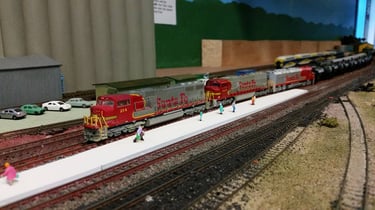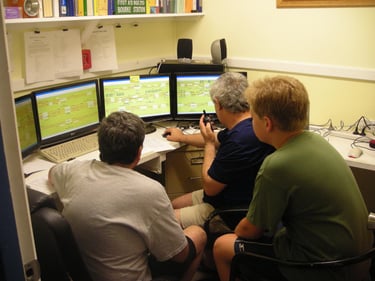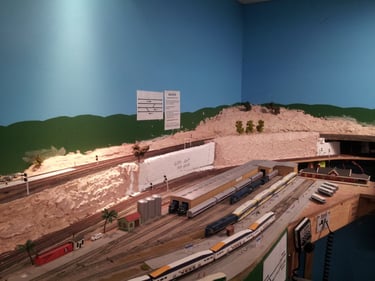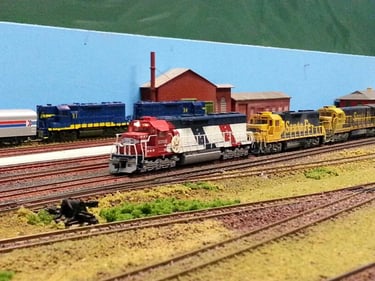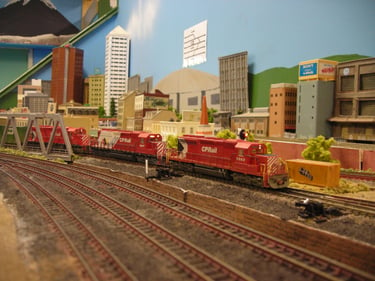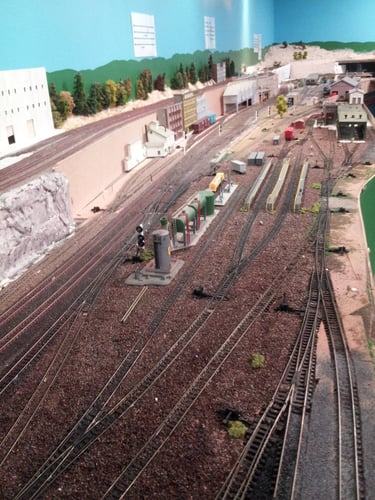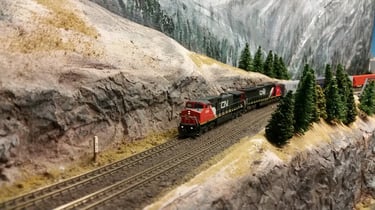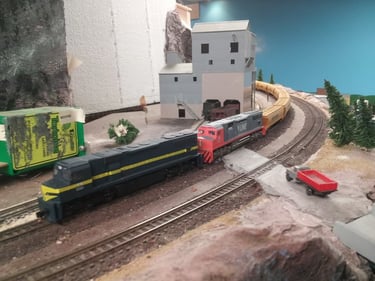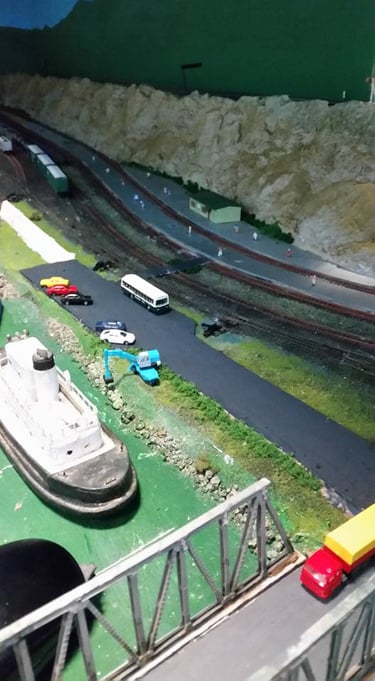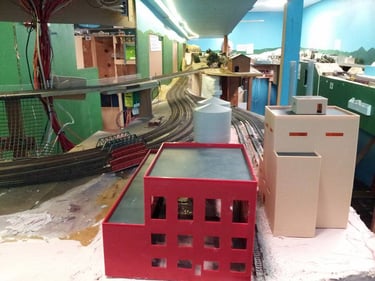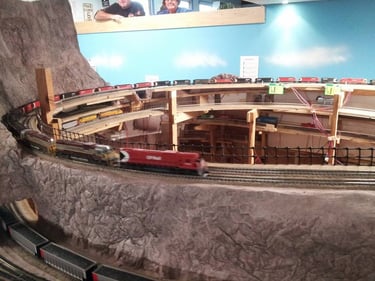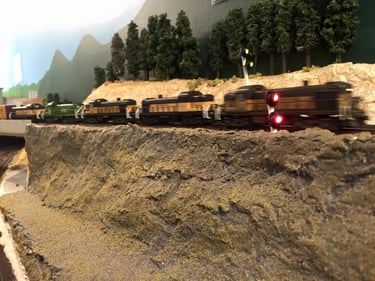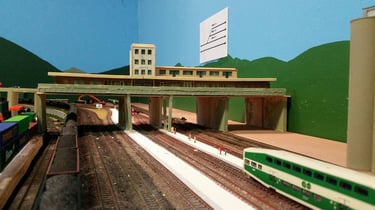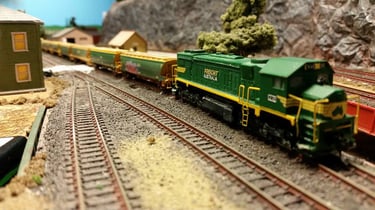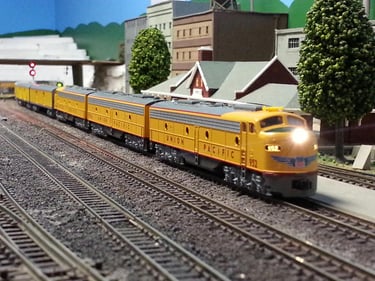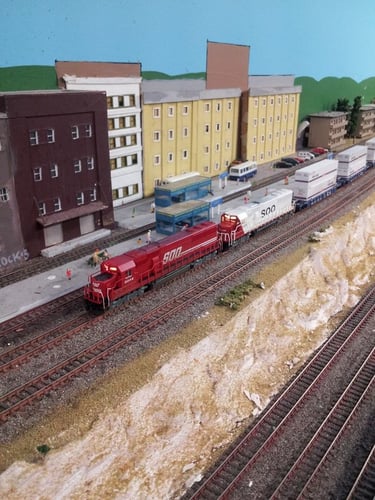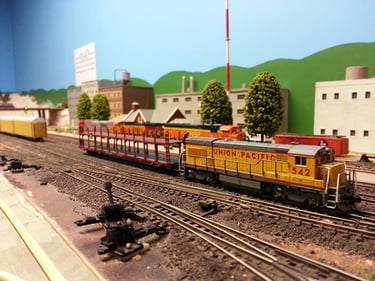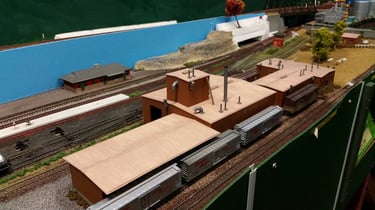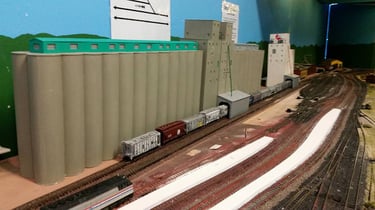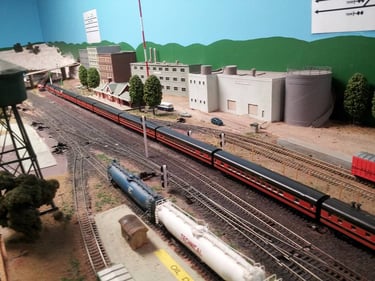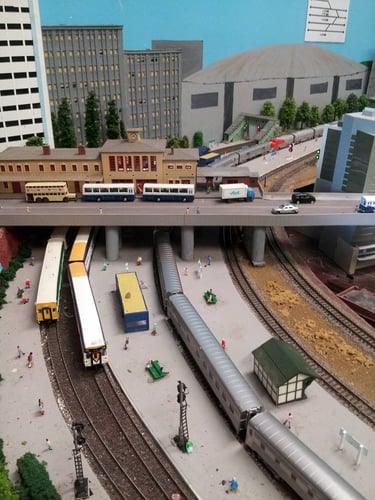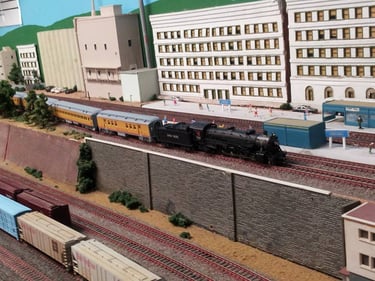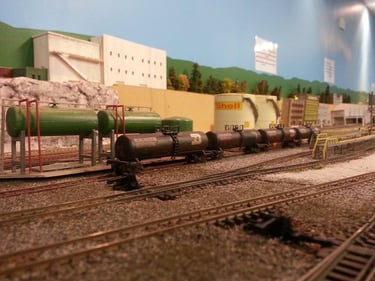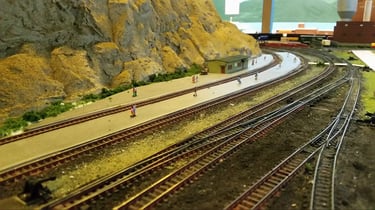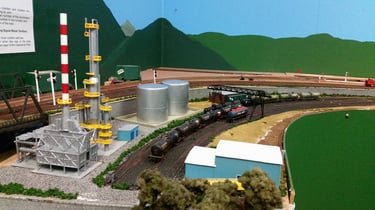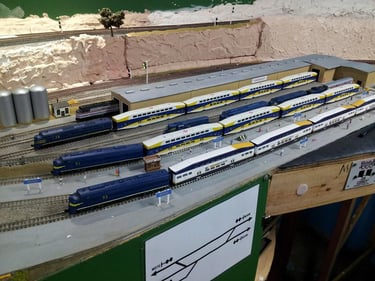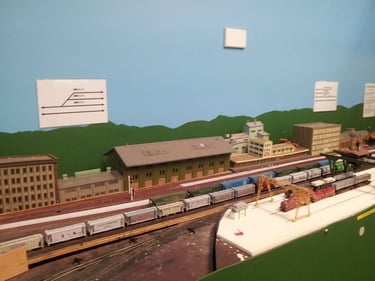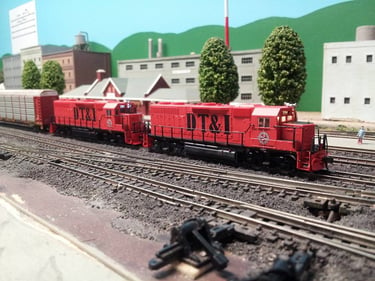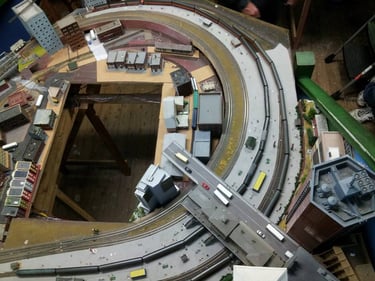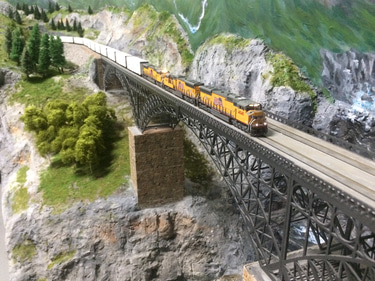blackfoot and new meadows
Our main layout in our Peakhurst clubrooms.
The layout was built over a number of years from 2006 onwards. The mainline was designed as a double track folded dogbone with a helix joining the lower level to the upper level. The original concept was that the layout represented the Mountain Division of a freelance railroad in central Idaho running between Blackfoot and New Meadows carrying bridge traffic between its Union Pacific connection at Blackfoot (near Pocatello) and the BNSF interchange at Spokane.
Originally, Union Station and 12th Street Yard doubled as both ends of the Mountain Division. Preponderance of yard tracks at the expense of industry tracks emphasised the division point status of the yard. Blackfoot Union Station, however, was the origin of commuter traffic as far as the steel works at Atomic City.
Construction of the layout commenced during the second half of 2006, and all track was laid and became fully operational, but unsceniced, by the end of 2007. During the next couple of years, scenery was added, a fiddle yard, called SUSY, was added to provide a facility for members to place their trains onto the layout, and various operations were undertaken.
In 2010, it was decided to change the operation of the layout. It was decided to make SUSY both ends of the bridge line and upgraded its capacity to include a major passenger station and more yard space. Its operational role was to be the "rest of the world". The 12th Street Yard then became a true division point. Operationally, trains started in SUSY, ran around the whole layout, and returned to SUSY.
It was also decided to have three railroad companies operating on the layout:
The Blackfoot and New Meadows Railroad, which owned the main line and major yards and managed all east/west operations to/from SUSY. Mainline passenger trains would stop at Blackfoot Station to interchange with the BART system and at Atomic City, in winter, to interchange with a ski train to Ophir.
Billingham Area Regional Transport (BART) that provided an urban and interurban passenger service from a new station at Meadows to various locations on the layout. BART ran from its own station at Meadows, with trackage rights over the B&NMRR, except between Blackfoot Station and Taber Station where the track became quadruple track providing a double track line for BART traffic with numerous stops as part of its urban service.
Deadwood and Mt Sharon Railroad, which was a short line servicing the fruit industry and military training areas at Park City, the cattle industry at Deadwood, the ski resort at Ophir and the timber industry around Mt Sharon. It connected to the B&NMRR at the Lowman interchange yard.
The layout, when running operations, was controlled from a Dispatcher panel, which was located in a room overlooking the layout.
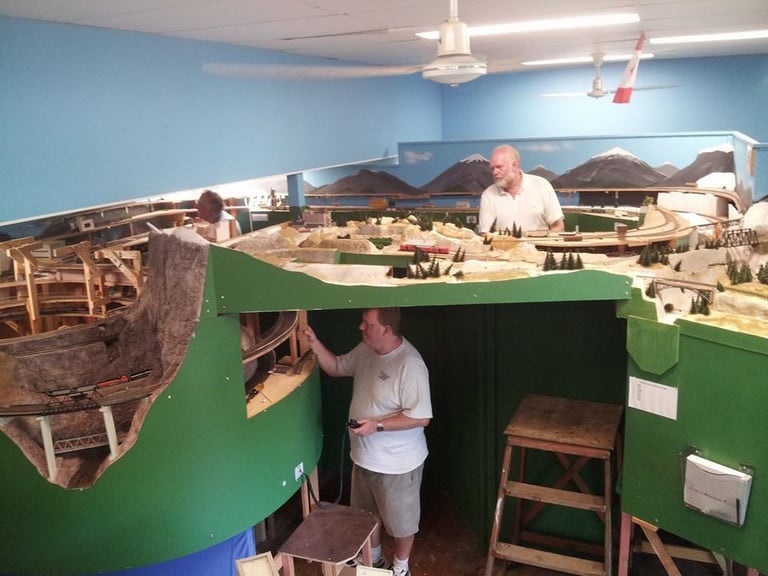

Layout Details
Layout Room
Main line
Mainline points
Switching areas
Operating System
Layout Control
Train tracking
9.5m by 7.5m
140 m double track inverted dog bone.
157 points remotely operated from the control room using Digitrax DS64 stationary decoders and Circuitron Tortoise switch machines.
Twelve signal boxes, with local mainline point operation available
Digitrax using a DCS200 controller/booster and three DB200 8 amp booster power districts, each with four 3 amp sub districts.
Train Controller software connected to the Digitrax Loconet communication system. The layout could be operated independently if required.
Five BDL168 detection units with 78 detection blocks for dispatcher train tracking and automatic signalling.
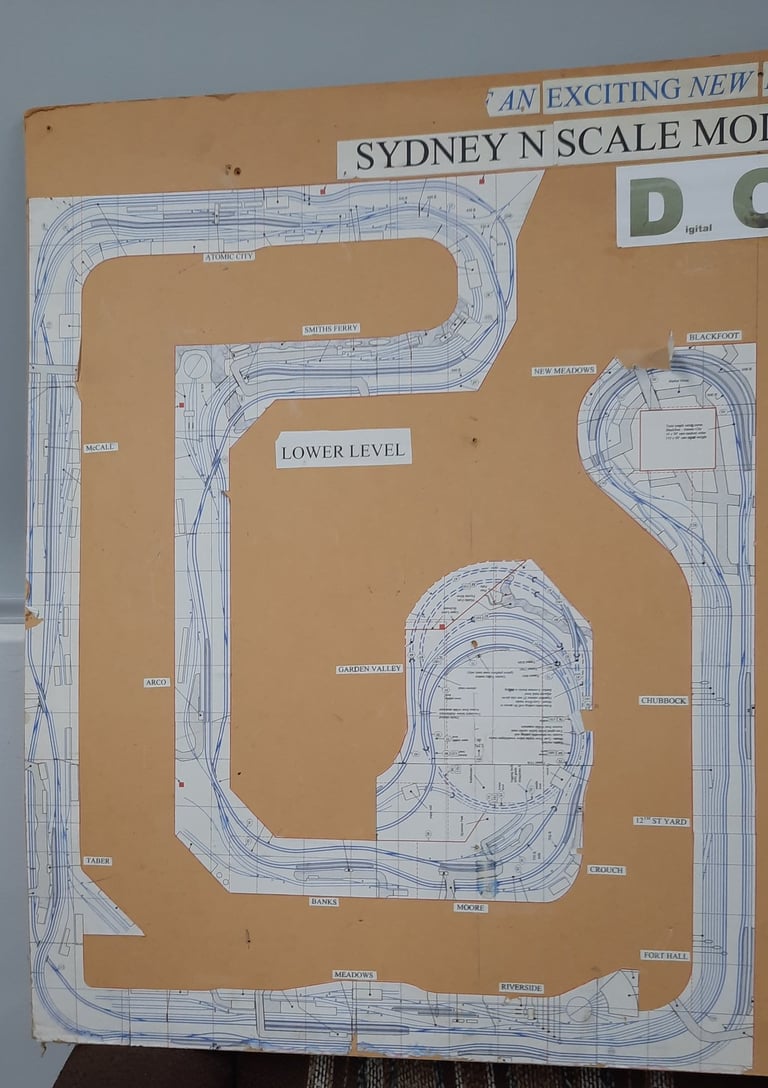

Track Plans
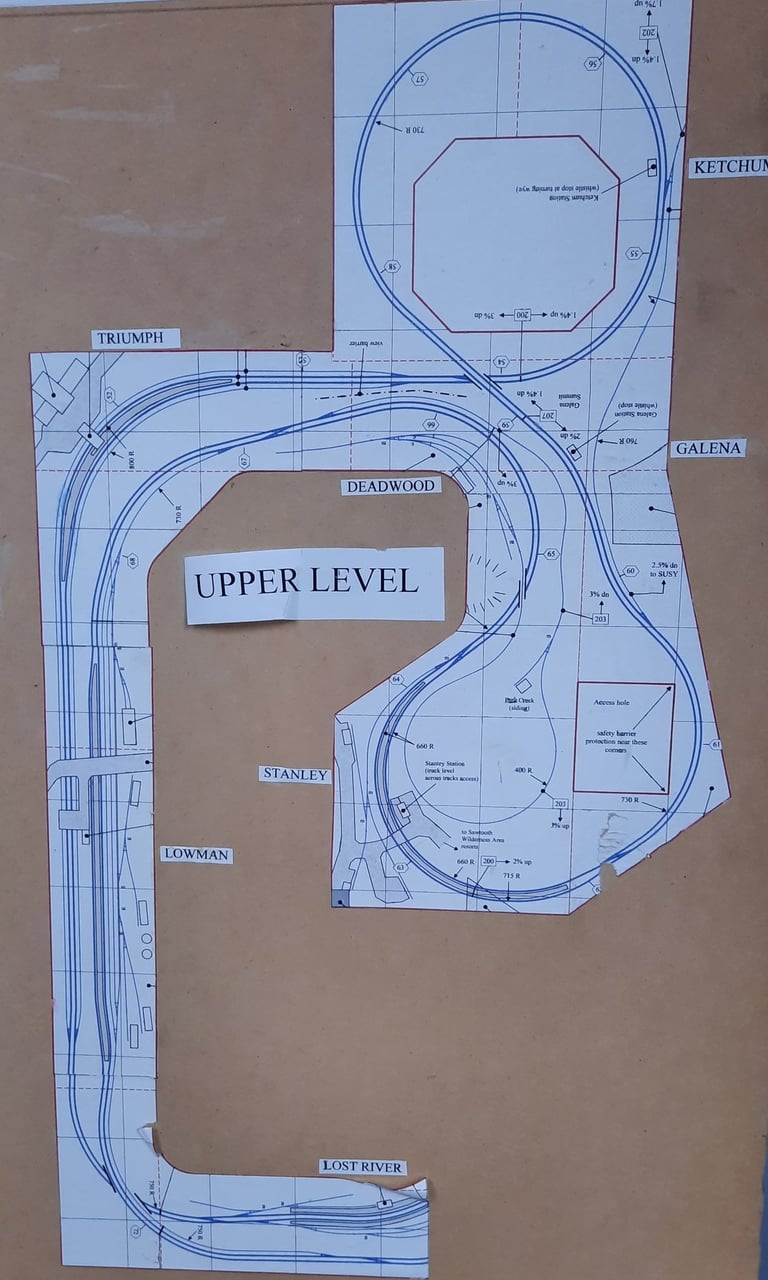

Click on a photo to expand it
